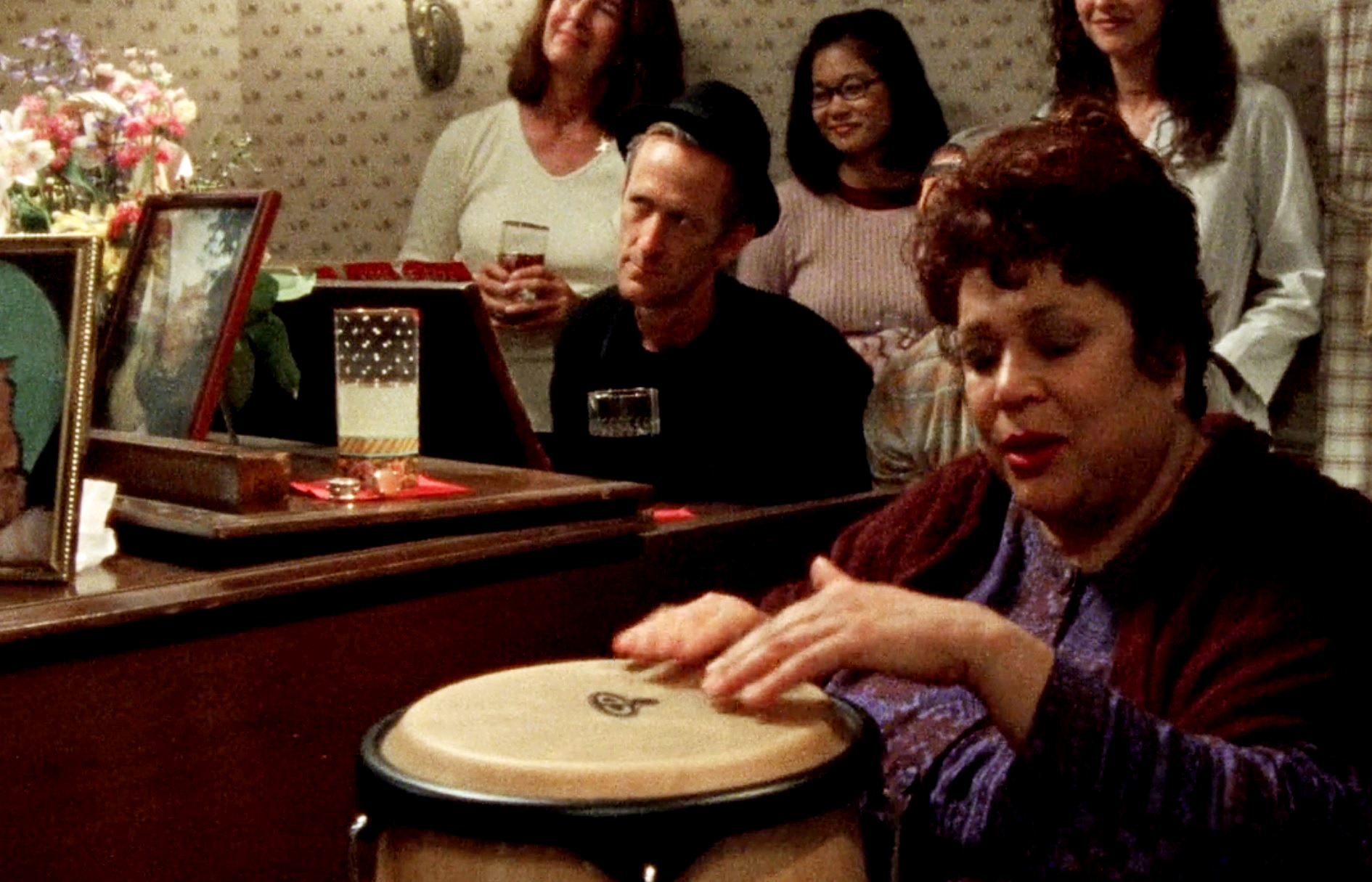Cinnamon's Wake
Pianos with Morrie
18 January 2023

The only way to start writing about this episode is with a moment of silence for Cinnamon, who departed this mortal coil for doggy heaven more than twenty years ago.
...
Thank you.
Although this episode gets sombre at Cinnamon's wake, it fits in a lot of joyful moments. "Try a plum, they're better than sex" Ms Patty says to Rory at the grocery store in this otherwise PG series. Rory also forgets that buses stop at bus stops in this episode in a classic awkward bit (maybe we should be looking at buses?).
What this episode does not have time for, is any electronic devices. The grief of Cimmanon's passing sucks up too much space for us to have time for the technological advancements of the early naughties.
So here's some stuff about pianos:
The piano
Morey jumps on the piano as his way of saying goodbye to Cinnamon. He plays an old jazz song called "I Thought About You". A tune which Kenny Burrell and Coleman Hawkins have also played, in a beautiful rendition. How did piano's come to exist?
Before pianos
In medieval times, when it came to musical instruments, the harpsichord ruled the roost . Much of bach's music is aimed at ye old harpsichord. The harpsichord established the black-white key pattern we have on pianos today. But there was one huge problem with it: It only plays at one volume! Harpsichord keys will pluck strings at the same strength no matter how heavily you smash them.
Even in the renaissance, it was pretty obvious that music which only plays at a single volume is not good. It's quite hard to express emotion when the emotion has to have a flat level of noisiness. Listen to Sam Phillips' "La la" music cutting in the cuts between Gilmore Girls Scenes. Those la's are always fading between different dynamic levels. Different la's getting different levels of emphasis - especially in the most emotional of cuts in the scene where we finally find out about Cinnamon's demise.
Bartolomeo Cristofori
A Tuscan instrument-caretaker called Bartolomeo Cristofori came along and decided to do something about this problem. He invented the quiet-loud (pianoforte) around 1700. Instead of having a set of keys which pluck strings like in a harpsichord, the piano would hit the strings with a hammer. The main innovation was that the velocity of the hammer hitting the strings was affected by the velocity by which you hit the keys. The technology that does this is called a Piano Action.
Piano Action
A piano action is a mechanical system which takes the energy applied to a key and converts it into a hammer hit.
It's a super complex mechanical system, which has to cater for a number of potential occurrences: What if you want to immediately hit the string again? How do you prevent the hammer from bouncing back up and hitting the strings again? How do you stop the string getting muted when the musician holds down the key? It all starts to sound a bit like trying to code up UIs and all the potential ways users can misuse your inputs and buttons.
Cristofori basically managed to handle all of these cases in 1700 in a Herculean effort of engineering, and his technique continued to be the default design. This was until a French aristocrat called Sébastien Érard decided to out-do him with the double escarpment action as a less jammable system for repeatedly hitting keys.
Morrie's Piano
It's tough to get much information on Morrie's piano with the amount of Cinnamon memorabilia on it, and with Mrs Patty playing a conga drum taking the spotlight in the foreground. What is clear is that it's a grand piano. It's big. It's sideways, and it's quite lush with red velvet lining. It's the perfect way to send off a much loved and long deceased animal.